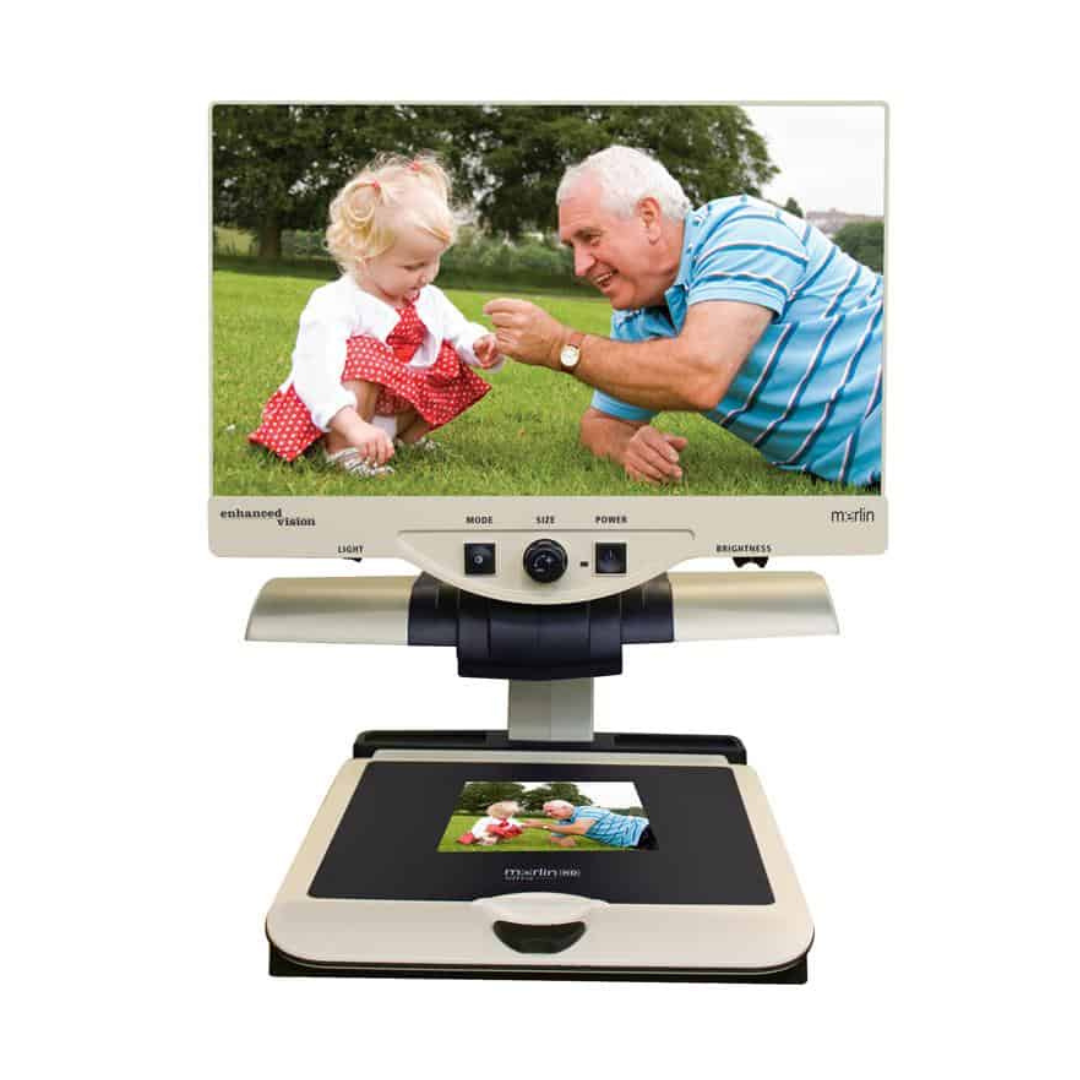Enhanced Vision Merlin Ultra Full HD Video Magnifier
Enhanced Vision Merlin Ultra Full HD Video Magnifier
Share
SKU:MR2UE22A
Out of stock
Couldn't load pickup availability
We accept







The new affordable Merlin ultra offers full high-definition color and contrast, resulting in sharp crystal clear images and vibrant color accuracy. Merlin ultra’s new Full HD camera allows for a wide field of view, displaying more text on the screen in amazing detail. Simply the greatest value and best picture quality available in HD desktop magnification, there’s even more to see with Merlin ultra!
Easily read books and magazines, read and write letters, manage your financial records, view color photos, do crossword puzzles, and even pursue a favorite hobby. See for yourself what makes Merlin ultra the greatest value and the absolute best picture quality available in HD desktop video magnification.
Features:
- New Full HD camera
- Amazing 1920 x 1080 resolution for 22″ and 24″ LCD models
- Stunning 1280 x 720 resolution for 20″ LCD models
- High resolution HD LCD for best image quality
- Wide field of view
- Simple, easy-to-use tactile controls
- LED lighting for truer picture quality
- Wide range of adjustable magnification (2.4x to 73.2x depending on screen size & zoom table selected)
- Adjustable viewing modes for high contrast personalization
- XY table for smooth continuous reading with a user friendly lock mechanism
- Computer compatible – toggle between CCTV and computer (Additional hardware may be required)
- 3 year warranty
- Set up is easy, just plug in and begin
Color Select Feature
With our low vision electronic magnifiers, many color select options are available for increased contrast. Depending on your eye condition, certain text and background color combinations allow for ease of reading. All Enhanced Vision solutions incorporate 2 to 7 color select options. One of the color select options is black and white. It will convert anything you are viewing to a black and white image for increased contrast.
Specifications
General:
LCD 20”, 22” or 24”
Dimensions: 24”H (maximum) x 20”W x 20”D
(61cm x 51cm x 51cm)
Operating temperature range: 50-104°F / 10-40°C
Storage temperature range: 32-122°F / 0-50°C
Monitor:
Resolution: 1280 x 720 (20” model)
Resolution: 1920 x 1080 (22” model)
Resolution: 1920 x 1080 (24” model)
Response Rate: 5 milliseconds (20”, 22” & 24” monitor)
Contrast Ratio: > 1000:1 (20”, 22” & 24” models)
Color Depth: Over 16 million Colors
Controls: Light Switch On/Off, Brightness, Magnification, Mode, Power
Magnification:
20” LCD: 1.9x (minimum) to 51.2x (maximum)
*Zoom range for 20” monitor is based on a 16:9 aspect ratio
22” LCD: 2.1x (minimum) to 55.9x (maximum)
*Zoom range for 22” monitor is based on a 16:9 aspect ratio
24” LCD: 2.3x (minimum) to 61.2x (maximum)
*Zoom range for 24” monitor is based on a 16:9 aspect ratio
*Zoom Ranges subject to change
Power Supply:
110V-240 VAC 50-60HZ
5VDC 4.0A
Equipment Classification (IEC 601-1):
Type of Protection: Class 1
Degree of Protection: Type B
Mode of Operation: Continuous
Color Modes:
– 4 Default Modes (True Color, Black & White, Enhanced
Positive, Enhanced Negative)
– 5 Color Select Modes
3 Default Modes: (Yellow on Blue, Black on Yellow, Yellow on Black)
2 Programmable* Modes
*Up to 28 Color Select Mode Combinations are available
XY Table:
XY table size: 16” (406 mm) x 16 1/4” (413 mm), 3/8” retaining edge
Working space height: 7 3/8” (18.7mm)
Table height clearance: 1 3/8” (35mm)
Video output Resolution on LCD:
SMPTE 296M – HD 720p 60/50
SMPTE 292M – HD 1080i 60/50
Accessories:
Power Supply & “Y” Power Cord
Owner’s Manual & Quick Start Guide
Warranty Card
Warranty:
3 Years, Parts and Labor


